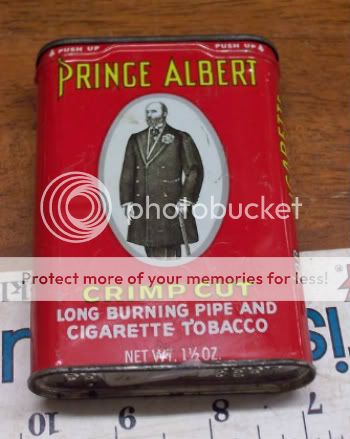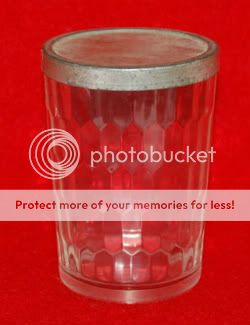
A couple of weeks ago I posted in this space a piece about things that are no longer available or are quite different now. I intend to continue this tonight with another slew of products that are either gone, or that the adverts are gone, or are quite changed.
Let us take for example a simple item like coffee. My family were always Folger’s drinkers, so I shall use that as the example. When I was a kid, there was only kind of blend and only one roast. However, it came in three degrees of fineness (“grinds”): regular, fine, and drip in decreasing order of particle size. Ma was stingy, so she always used drip grind on the theory, correct by the way, that it was more extractable. The problem was that she used a percolator, so the very fine particles would make the coffee cloudy.
Today, there are over a dozen variations of blends, roasts, and flavors for just this one brand! However, you NEVER see any mention of grind! Things change a lot.
We shall look at several items that have changed one way or another. Since I already mentioned coffee, let us start there. I shall limit the discussion to Folger’s since I am more familiar with it.
When I was little, Folger’s came in a rather flat, steel can. Here is a link to some pictures of what I remember by someone trying to sell an old can. I was not able to extract the pictures, so the link was the best that I could do. Those were full pounds. The back of the can, which indicated that it was a full pound, and what grind it was, was not shown. I did the best that I could. Notice the third picture that shows the bottom of the can. See the little metal tab? That was the end of the key to the can that was broken off and used to remove a thin piece of steel below the lid to open the can.

Folger’s (and others) later went to a taller steel can, with no key since everyone had can openers by then. Those came from the store with a plastic lid to reseal it after the lid was removed because, unlike the previous version, the cut out lid was useless to reattach. This design of can came in around 1966, give or take, and is still used by many coffee distributors.
Now the trend is to go to plastic containers. But the real issue is that, except for a very few exceptions, a “pound” can of coffee is much less than that, although the cans pretty much like pound ones. My (steel) can of Great Value 100% Colombian coffee contains actually only 11.3 ounces of coffee! That is a little less than 71% of what it seems to be.
Tobacco
Since I am smoking a hand rolled Prince Albert cigarette, we might as well start with that. Back when I was a kid, Prince Albert came in oblong steel cans with rounded edges (the so called “tins”). At the time it was advertised as “long burning crimp cut pipe and cigarette tobacco” but now is called “pipe tobacco” in the title because of differences in taxation rates, but still says “long burning” and “crimp cut”. Now, crimp cut applies only to rolling cigarettes, so that is a wink, wink, nudge, nudge. In the day, RJ Reynolds produced PA, but is has been sold to the John Middleton company now. The tobacco seems to be much the same.
When it came in tins, for a long time there would be a little pack of PA rolling papers betwixt the paper lining that held the tobacco and the tin itself. PA papers were really thin and strong, but had no gum on them, so the cigarettes were very fragile. Granddad burnt down three houses (and almost a forth) because of them disintegrating and dropping hot tobacco coals into chairs.
Here are some links to pictures of the tins, and pound tins as well. Lord knows how many of them I have emptied!


I received a 14 ounce tin as a gift once. Interestingly, the modern packaging (a cardboard box containing a aluminized paper bag for the 1.5 ounce size, and a very useful for other purposes plastic tub are still 1.5 and 14 ounces respectively. Go figure! Coffee just gets smaller and smaller in quantity, but PA is still like is was 50 years ago.
Whilst we are talking about tobacco, how about prerolled cigarettes? Kent was a big brand in the early 1960s. Here are some commercials that you probably do not remember, but was a integral part of a very popular TeeVee show at the time. They have all been purged from the reruns that continue to enjoy some popularity.
Yes, that is just about the entire cast of the immensely popular Dick Van Dyke Show advertising Kent cigarettes! Did you catch the line about the Micronite Filter? If not go back and check again. Kent’s claim was it produced a better flavor. In reality, the Micronite Filter was a mixture of granular activated carbon and amphibole ASBESTOS! I kid you not one iota! Kent used what is now known to be a known carcinogen to “absorb” another know carcinogen! I remember handling those filters (some relative whom I can not remember used to smoke them) and even non smoked ones would come apart and stain you hands with the carbon, whilst the asbestos floated around. I believe that this concept is an excellent candidate for what many of us call EPIC FAIL!
Now, I do not want to single out Carl Reiner (the creator and producer of that show), so I shall also include Paul Henning, the creator and producer of the funny Beverly Hillbillies, (until it got trite after the sixth or so season) the very trite Petticoat Junction, and the biting satire show, and one of my favorites, Green Acres. Check this one out, and there are many more examples. Like for the Dick Van Dyke Show, all of them have been purged from the reruns.
I apologize (almost) for saying this, but Nancy Kulp (Miss Jane) almost looks like a porno actress when smoking the first few puffs. Here is another clip. She died of cancer in 1991.
Notice that Pearl was played by Bea Benaderet, who also was the original Wilma from The Flintsones, a show that also advertised cigarettes. Ms. Benaderet died in 1968 of, can you guess it? Lung cancer!
Several of my Great Aunts “dipped” snuff, meaning that they used it like Copenhagen or other products which are more properly called snus. The snuff that they used was the very fine, dry kind originally used for actual snuffing, or sniffing up the nose, but they used in by mouth.
One famous brand was Garrett and Sons, and it was the brand that they used mainly. Here is a link to a picture of an intact container, presumably with snuff in it. The neat thing was that the container was actually glass and held almost exactly eight fluid ounces, making them perfect for the table, especially for kids. I remember drinking my milk from snuff glasses for years and years. Back in those days people were poor and really needed these sorts of “perks” to make ends meet.


If you look at the very top left picture, here is one with the label removed. I still have one exactly like it in my china cabinet, the sole survivor from my childhood. I think about my Great Aunts whenever I look at the glass.
Food and snacks
Crystal Wedding Oats used to have glass saucers, cups, juice glasses and the like in the box. Quaker bought the brand some time ago and replaced the glass items with plastic ones. This product is still available, complete with the plastic glasses still inside, but I have not seen that brand at the store in years. Here is a link to pictures of some of the actual glass ones from years gone by. Note that some pieces are too big to put in an oatmeal box. Those were “completer pieces” that you could order from them. I have drunk many a glass of juice from these old pieces. Note the unique design.
Some products still exist but are hard to find. I mentioned a few of these last time, and here are a couple of others that come to mind. First, do you remember ST-37? It was a mild antiseptic and mouthwash, and Ma kept it around all of the time. I liked it because it did not sting very much when applied to a cut. It used to come a blue glass bottle and was dirt cheap. As you can see from this link, it is not cheap any more and is also hard to find because of low demand. It has been replaced by triple antibiotic ointments and sprays these days. Actually, I like the idea behind ST-37 better since it an NOT an antibiotic but rather an antiseptic, so bacterial resistance does not occur.
Two products that are no longer available are Mercurochrome and Merthiolate. These are organomercury compounds that were used as antiseptics, but were removed from the US market in 1998, presumably because of their mercury content. However, Mercurochrome was not a very effective antiseptics in the first place. Mercurochrome was the bright red one that stained anything that it touched, but did not sting because it came in an aqueous solution.
Merthiolate, on the other hand, is an extremely effective antiseptic but has been removed from the shelves for OTC use because of the mercury content. It was the lighter colored one that really stung because of the alcohol solvent. This material, also known as thimerosal, is still used in medicine, most controversially as a preservative in vaccines. By the way, the studies that associated it with autism have been completely debunked and the lead researcher sanctioned.
That covers quite a few “old timey” products that either no longer exist or are different or difficult to find. I am sure that you can remember things that are no longer available. If so, please share your thoughts in the comments.
Update: Thanks to RiaD at firefly-dreaming.com for formatting the piece so that the pictures show, and not just links.
Warmest regards,
Doc, aka Dr. David W. Smith

1 comment
Author
remembering distant memories?
Warmest regards,
Doc